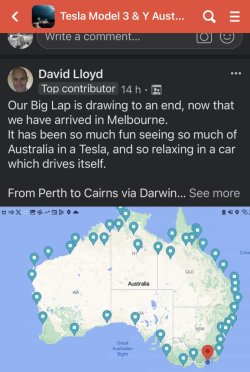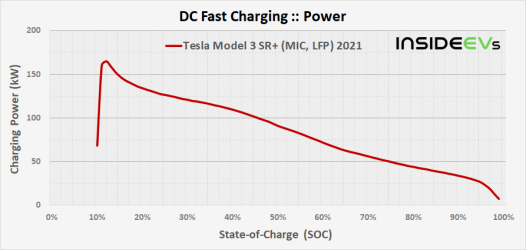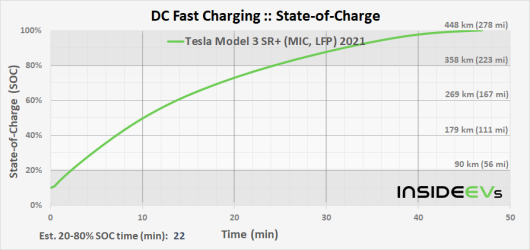Though my understanding is Lithium batteries last longer when the cells are not maxxed out to their top voltage. I need to research how EVs manage this a bit more.
Here are the recommendations:
1) Follow manufacturer charging recommendations
2) See 1 - seriously its that simple
3) If 1 and 2 are followed, battery longevity has less to do with km driven (aka number of battery charges) than the calendar age of the battery
You can actually ignore below in order to successfully maintain a healthy battery
There is a QLD Model S driver who has dome nearly 650,000km on the original battery, and apparently only 12% battery degradation.
..................
Some prefer a bit more specific detail below but this does not supersede the above.....
For Tesla RWD = LFP battery
Manufacturer recommnedations
1)ABC - always be charging
2) Regularly charge to 100% - this is because LFP battery have a very flat voltage to State of charge curve and the battery management system needs a reliable and unique reference voltage point in order to accurately estimately SoC and therefore approximate range. This occurs when V=3.65V. At this voltage the State of Charge (SoC) is typically 100%
3) There are minimal issues charging to 100% in a LFP battery - though it does not necessarily have to be every day - once a week or 2 weeks will be fine
For Tesla AWD = NCMA or similar battery
Manufacturer recommendations
1)ABC - always be charging
2) Daily driving charge to less than 80% SoC. NCMA and similar don't have the issues with battery SoC estimation, so can charge to less than 100%
3) Long range driving - there is no problem charging to 100% but if not needed dont charge to 100%.
4) follow 1-3
5) If charge to 100%. Most people say drive soon after hitting 100% to reduce dwell time at 100%
4)NCMA and similar high nickel batteries don't like hot temps and high SoC.
My charging routine for the Tesla AWD
1)ABC
2) For daily driving I'm charging to whatever SoC that gives me an end of day arrival home SoC of no less than 30%. So currently I am charging to 40-50%
3) I have no hesitation to charge to 100% - when I actually need it. Which I don't.
Daily driving = your usual commuting drive + personal range margin

















